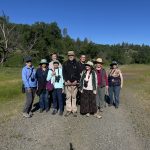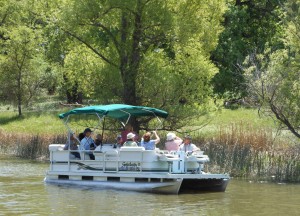CANCELLED in compliance with the State of California guidelines issued on March 12, 2020.
“What birdwatchers need to know about ticks” is the title of the presentation at the Thursday, March 19, meeting of the Redbud Audubon Society at the Lower Lake Methodist Church Social Hall, 16255 Second St. in Lower Lake, starting at 7 p.m.
Guest speaker will be Dorothy Leland, of LymeDisease.org, a national Lyme disease education and advocacy organization.
“Protecting yourself from ticks starts with recognizing that the topic is worthy of your time and attention,” according to Leland.
Ticks are tiny spider-like bugs often found in wooded and grassy areas. There are different kinds of ticks, which can carry many different diseases. The most common tick-borne infection in the United States is Lyme disease.
According to estimates by the Centers for Disease Control and Prevention, some 400,000 people become infected with Lyme disease in the US every year, making it the number one vector-borne disease in the country.
It may start with flu-like symptoms, such as headaches, fatigue and fever. Sometimes, although not always, there is a “bulls-eye” rash. If you do have Lyme, this is the point where you want to be diagnosed and treated, before the microbe burrows into your body and creates long-term problems.
If not caught and treated early, Lyme disease can affect practically every system of the body. It can cause debilitating joint pain, crushing fatigue, insomnia, gastrointestinal dysfunction, life-threatening heart conditions, neurological symptoms and psychiatric disorders – to name a few. In children, it may also trigger learning disabilities and behavioral issues.
Unfortunately, many who are infected do not get promptly diagnosed and treated. People who actually have Lyme disease may instead be told they have fibromyalgia, chronic fatigue syndrome, rheumatoid arthritis or Alzheimer’s – all conditions that Lyme disease can mimic. They may also experience depression, without realizing their condition is caused by Lyme disease.
Pop star Justin Bieber recently disclosed that he has been diagnosed and treated for Lyme disease. Before his diagnosis, Bieber says he had years of poor mental health and self-destructive behaviors.
According to MyLymeData, a project which has surveyed more than 12,000 people with Lyme disease, only one-third of respondents were diagnosed within the first year of their illness. For most, diagnosis took three years or longer. That means that for three years, the bacteria could wreak havoc in the body without any treatment to stop it.
One barrier to prompt diagnosis is the widespread misperception that Lyme isn’t a risk on the West Coast. Yet, there is ample evidence to the contrary.
The California Department of Public Health has documented Ixodes pacificus, the tick that carries Lyme disease, in 56 of the state’s 58 counties. Stanford University researchers have collected Lyme-infected ticks at major recreation spots throughout the San Francisco Bay Area. A different study found infected ticks on the underside of wooden picnic tables at Berkeley’s Tilden Regional Park.
Lake, Mendocino and Trinity counties all have a lot of Lyme disease. People have also contracted it in San Francisco, at Point Reyes, and in the Napa Valley, just to name a few areas of concern, according to Leland.
Anyone who spends time outdoors – for either work or play – is at risk of tick exposure. In addition, ticks can hitch rides on dogs and cats, which may bring them into their owners’ homes.
So, what’s a person to do?
“I’ll give details on ways to protect yourself,” says Leland. “The short version is: Wear protective clothing and repellents, check your body for ticks often and properly remove any attached ticks you may find.”
If you suspect you might have Lyme disease, look at the “Symptom Checker” at www.lymedisease.org. It’s designed to jumpstart a conversation between you and your doctor about the possibility that you have Lyme disease. Learn as much as you can about tick-borne diseases and their symptoms. Pay attention to changes in your body. If needed, find a Lyme-knowledgeable physician to investigate further.
Leland became involved with Lyme disease advocacy when her daughter caught it at age 13. It took almost a year to get properly diagnosed and begin treatment and many more years to recover her health. Leland serves as Vice-President and Communications Director for LymeDisease.org. She is co-author of the book “When Your Child Has Lyme Disease: A Parent’s Survival Guide,” and writes a blog called “Touched by Lyme.”




